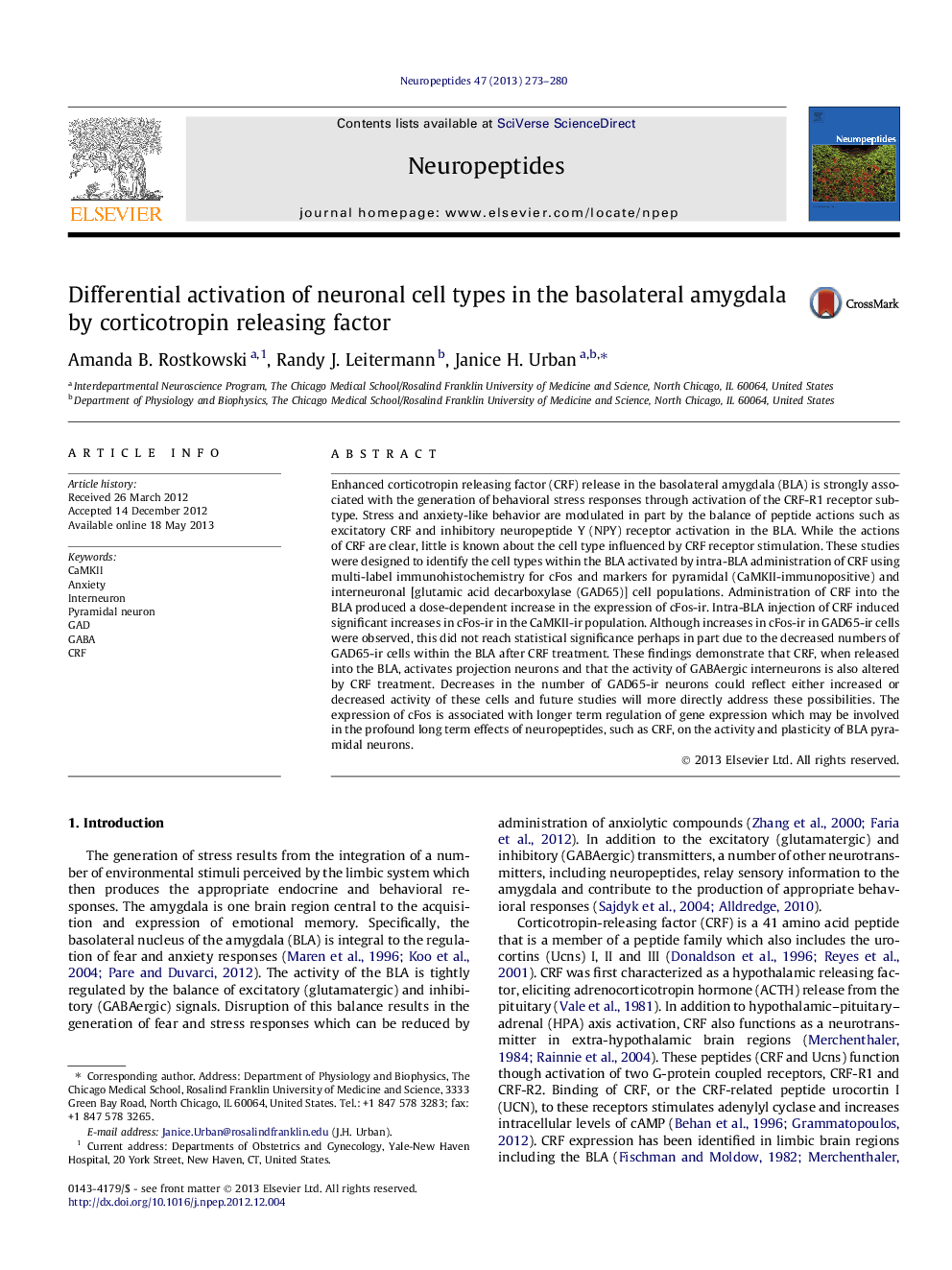| Article ID | Journal | Published Year | Pages | File Type |
|---|---|---|---|---|
| 2808106 | Neuropeptides | 2013 | 8 Pages |
Enhanced corticotropin releasing factor (CRF) release in the basolateral amygdala (BLA) is strongly associated with the generation of behavioral stress responses through activation of the CRF-R1 receptor subtype. Stress and anxiety-like behavior are modulated in part by the balance of peptide actions such as excitatory CRF and inhibitory neuropeptide Y (NPY) receptor activation in the BLA. While the actions of CRF are clear, little is known about the cell type influenced by CRF receptor stimulation. These studies were designed to identify the cell types within the BLA activated by intra-BLA administration of CRF using multi-label immunohistochemistry for cFos and markers for pyramidal (CaMKII-immunopositive) and interneuronal [glutamic acid decarboxylase (GAD65)] cell populations. Administration of CRF into the BLA produced a dose-dependent increase in the expression of cFos-ir. Intra-BLA injection of CRF induced significant increases in cFos-ir in the CaMKII-ir population. Although increases in cFos-ir in GAD65-ir cells were observed, this did not reach statistical significance perhaps in part due to the decreased numbers of GAD65-ir cells within the BLA after CRF treatment. These findings demonstrate that CRF, when released into the BLA, activates projection neurons and that the activity of GABAergic interneurons is also altered by CRF treatment. Decreases in the number of GAD65-ir neurons could reflect either increased or decreased activity of these cells and future studies will more directly address these possibilities. The expression of cFos is associated with longer term regulation of gene expression which may be involved in the profound long term effects of neuropeptides, such as CRF, on the activity and plasticity of BLA pyramidal neurons.
